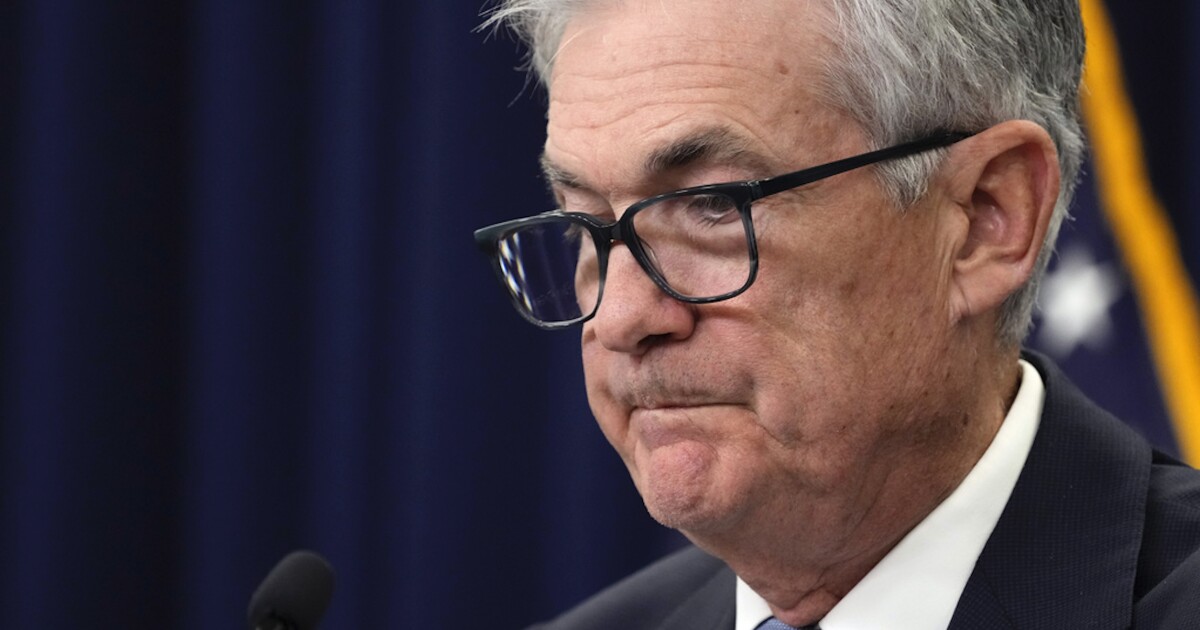

Another week has gone by, and another inflation report has shown prices are continuing to fall from the year before. But how much has inflation slowed, and when will it be back to normal?
The Federal Reserve has been raising its interest rate target in an effort to slow demand for goods and services and bring down inflation. On Friday, the Bureau of Economic Analysis released the March numbers for the Fed’s preferred inflation gauge, the personal consumption expenditures index, which showed inflation on an annual basis slowing from 5.1% in February to 4.2% in March.
What is considered healthy in terms of inflation?
FIRST REPUBLIC BANK STOCK CIRCLING THE DRAIN AS EXPECTATIONS RISE FOR RECEIVERSHIP
The Fed has what is known as a dual mandate. Basically, its two main priorities are full employment and price stability. Full employment just means keeping as many workers in the labor market as possible and the unemployment rate low, and price stability just means keeping inflation at a healthy level. For the Fed, the level that is considered healthy is 2% — so annual inflation in the most recent PCE report shows price growth is almost double than what officials are aiming for.
So how high did inflation get?
Annual inflation rose a lot more than the level it is at now. Looking at the PCE index, the highest it registered during the latest inflationary plague (which has been the worst in decades) was a whopping 6.9% back in June 2022, nearly a year ago.
But while the PCE index is a key gauge for the Fed, when most economists and news reports refer to a headline number for inflation, they are referencing the consumer price index, a separate gauge.
Earlier this month, the Bureau of Labor Statistics announced that inflation, as charted by the CPI, fell nearly a percentage point to 5% in the year ending in March — the lowest such rate since May 2021.
The drop in headline inflation was yet more welcome news for an economy that has been put on the rocks by the soaring prices of everything from food to energy and home goods. Additionally, prices rose just 0.1% on a month-to-month basis, that is, just from February to March, less than economists expected.
The CPI has fallen by an enormous degree since its respective peak, which also came in June 2022 and clocked in at a stomach-churning 9.1%. That was the worst inflation had been since the Great Inflation that helped sweep President Ronald Reagan into office. It was also well beyond four times higher than the Fed considers healthy — sending alarm bells tolling.
A big chunk of that June peak came as energy prices were squeezed to record highs amid the war in Ukraine. Rising energy prices accounted for half of that month’s total inflation, with the gasoline index rising a dizzying 11.2% just in the month.
Since June, annual inflation, according to the CPI, has declined every single month.
What’s next?
Federal Open Market Committee members, led by Fed Chairman Jerome Powell, are set to meet on Tuesday and Wednesday. While the labor market has begun to show some signs of cooling, most investors anticipate that the Fed will once again raise the target rate in order to tamp down inflation.
The Fed last hiked rates by a quarter of a percentage point at its March meeting, despite the sudden failure of Silicon Valley Bank and subsequent chaos in the banking sector. Powell has emphasized that the Fed’s dual mandate is still lopsided, meaning that officials are taking a heavy hand toward promoting price stability, even if it means temporarily putting full employment in the back seat.
CLICK HERE TO READ MORE FROM THE WASHINGTON EXAMINER
In its quest to return to 2% annual inflation, most of Wall Street is putting its money on another rate hike. Investors now assign about an 83% chance that the Fed will raise rates yet again, according to CME Group’s FedWatch tool, which calculates the probability using futures contract prices for rates in the short-term market targeted by the Fed.
The Fed will announce its interest rate decision on Wednesday, and Powell will hold a closely watched press conference soon after where he will field questions about the state of the economy and his outlook for inflation and employment in the coming year.





